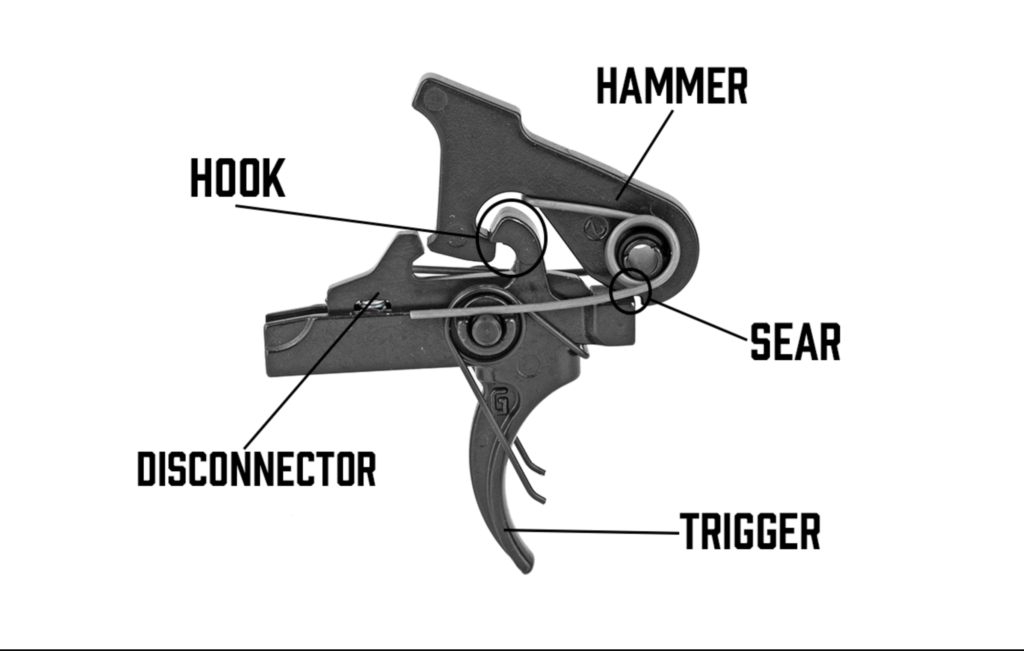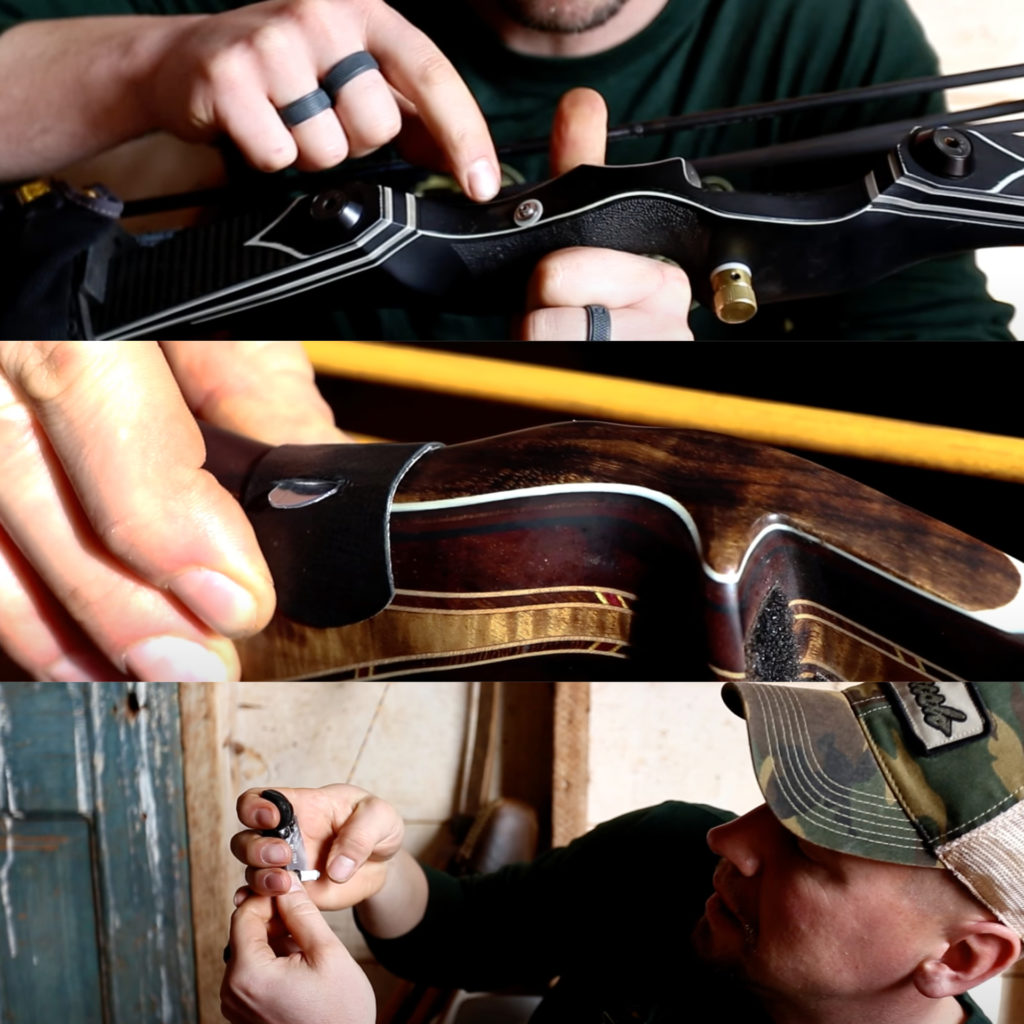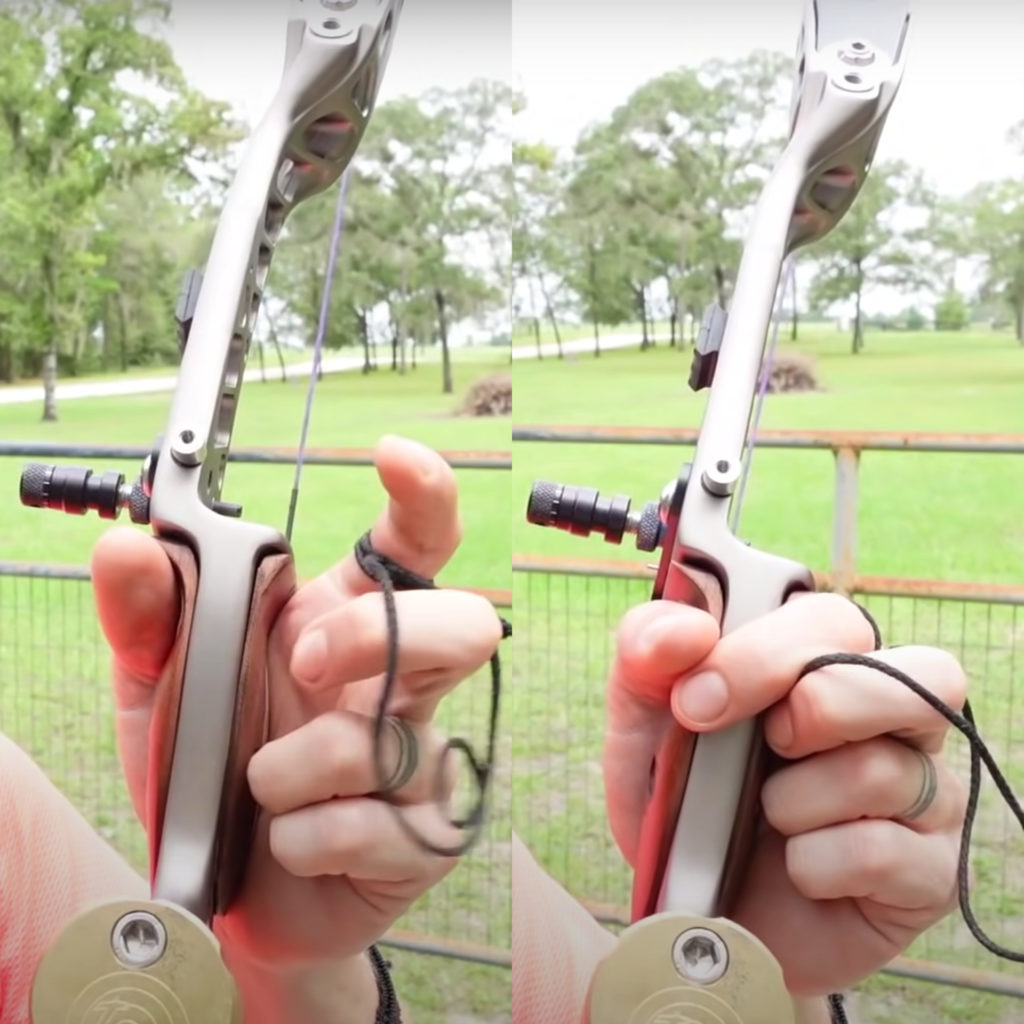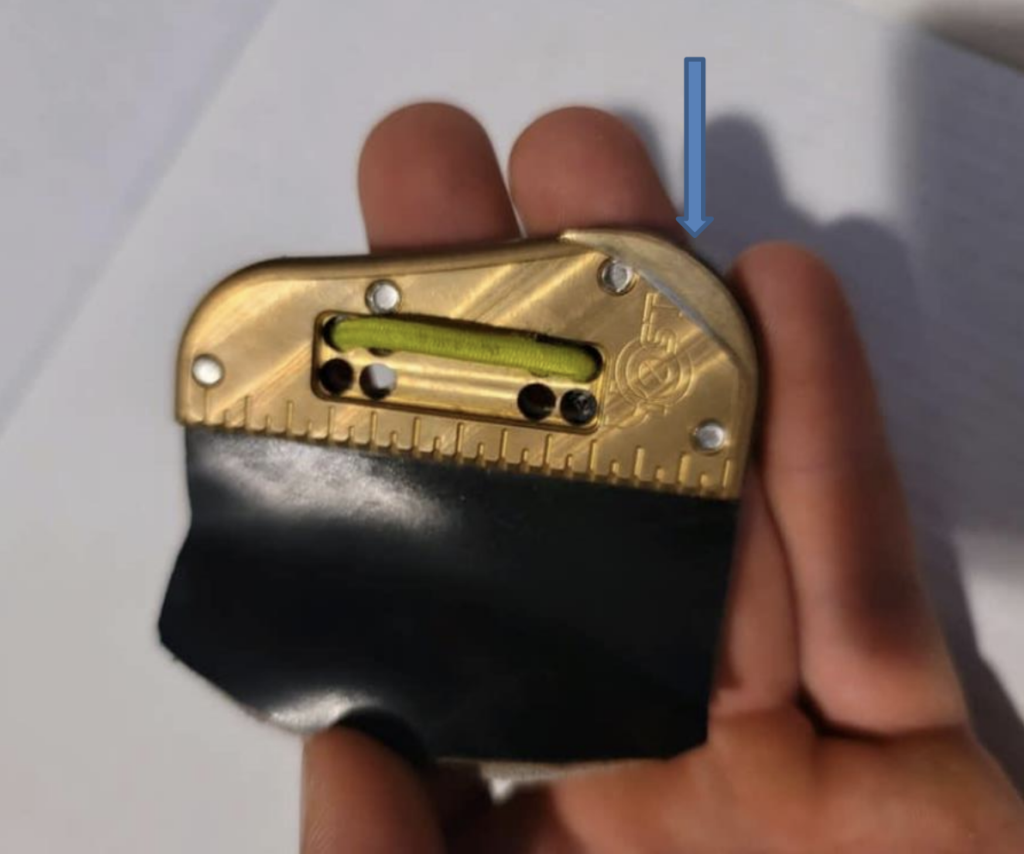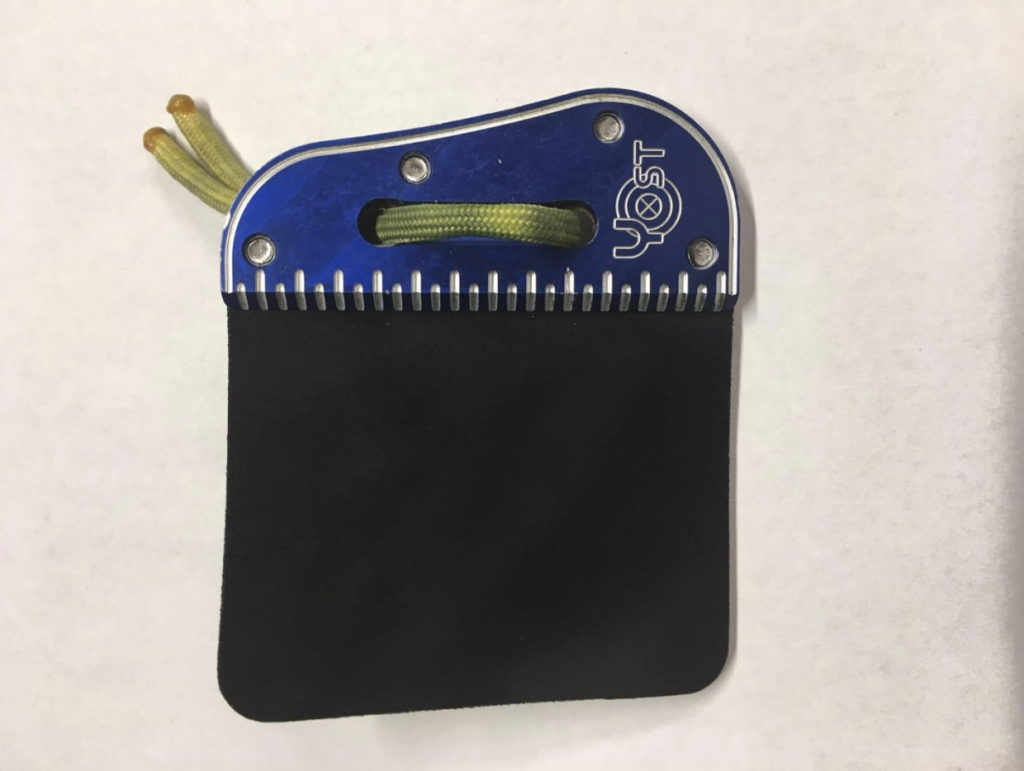Kristina Dolgilevica looks at sears and how barebows can – and can’t – use them
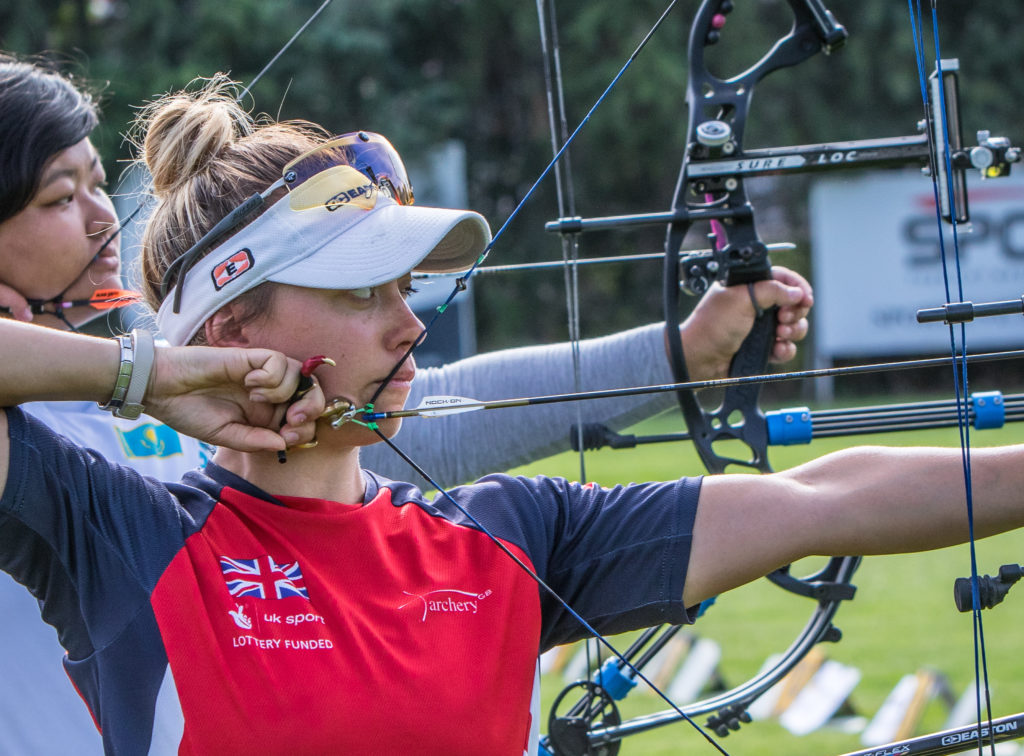
As a barebow archer I personally find no need to employ any of the sear techniques, though I do teach them when requested. Many of my fellow barebow archers have expressed a keen interest in sear techniques, some claiming it can cure target panic! Many seemed to cling to the hope it would work for them, but so far none has managed to achieve consistent results.
I wondered why that was and decided to carry out my own investigation. And it soon became apparent that there is a lot of conflicting information: many were unclear on what a ‘sear’ was, where they can be found, and whether they need to use one.
Though this article is intended mainly for barebow archers, I think it is important for all archers to have a better understanding of the subject. My aim is to put the issue into a broader context, introducing and defining the most common types of sear mechanisms from across the shooting sports. Because the possibilities of barebow ‘sear’ technique are countless, I will limit myself to the most prevalent types, those you can follow up with video references: the ‘grip’, the ‘tab’, and the ‘mouth’ sears.
What is a sear?
What is a sear? Broadly, it is something that holds back a weapon from firing until the correct moment – whether that be for maintaining user control, correct mechanical function, safety, accuracy, or all of the above.
In a gun, the sear is a mechanical notch held under spring tension, which is activated by the dynamic squeezing of the trigger. Once the desired amount of pressure is exerted by the finger pad, the sear is released from under the spring, activating the hammer (if there is one), and discharging the gun. This universal principle applies to many other weapons, especially crossbows.
Like all other sears, its function is to aid the ‘firing’ and the ‘releasing of’, and it should not be confused with the safety catch. In modern firearms sear pressure is adjusted to suit individual preference, and what the user feels when pressing on the trigger is the spring tension that holds the sear. In archery a ‘sear’ is found outside the main body of the weapon.
Sears: recurve
In a modern Olympic recurve setup, the clicker plate acts as the sear, and serves a dual purpose: it is a draw check and a ‘subconscious trigger device’. The latter is the main advantage for the recurve archer. The clicker is tuned to an individual draw length, and is set to ‘click’ and trigger the release at a specific point during expansion.
Draw checks and subconscious trigger devices are not allowed under WA Barebow division rules. (For full equipment specifications see WA Rule Book 4, Field and 3D, Chapter 22.3; Rule Book 3, Target, Chapter 11.4).
Compound
A sear can be found in all compound release aids. With back tension release aids, the shot is activated purely through back tension. With a hinge, the archer is going for a surprise release and the shot is additionally activated through the rotation of the handle at full draw; the hand must be relaxed. For those who do not like to be surprised, the hinge release has a moveable sear that can be set to produce an audible ‘click’, much like the Olympic recurve clicker plate.
Thumb and finger releases follow the same trigger-finger principle as firearms, relying on the dynamic finger tension application in addition to back tension. It must be noted here, that regardless of the type of bow or trigger mechanism, all can cause hesitation, anxiety and, in severe cases, recurring target panic. Thus, all can act as the so-called ‘cures’, but also as triggers of target panic, depending on the individual archer and the circumstances. Hold this thought going into the next section.
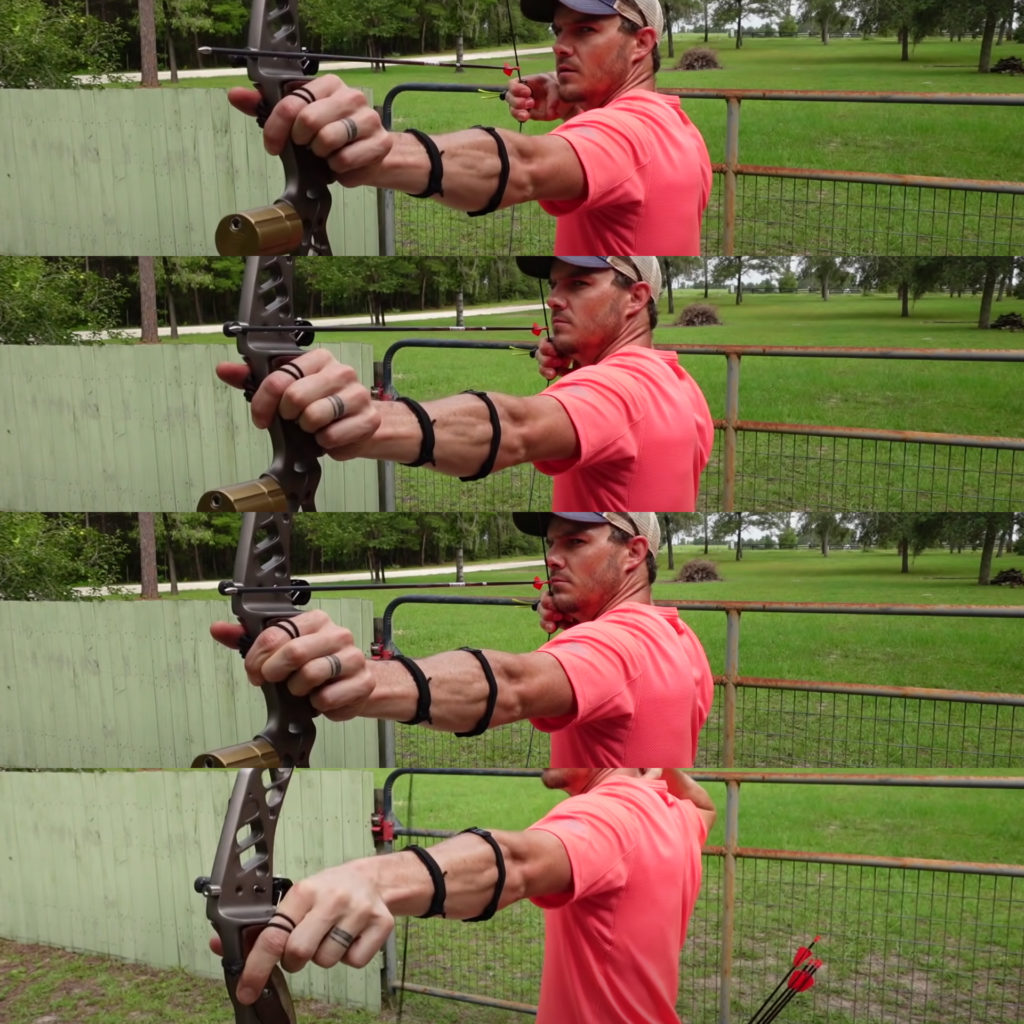
Barebow sears
If in compound the sear is centred around the release aid, and in recurve, on a detachable clicker plate, then, with the barebow, the archer must work with what is legally allowed. With ‘grip’, ‘tab’ and ‘mouth’ sears, the meaning is straightforward, and the archer will work around their equipment, the bow grip, or their tab, or, in the latter case, any comfortable and repeatable method using their mouth cavity. Mouth sears have not yet made their appearance in the official rule books, and are becoming a minor ‘fad’ online in archery circles.
The most popular example of one such technique is when the archer creates an air bubble in their mouth and releases it via air pressure during expansion; the string is released once the bubble is let out. Another uses the same principle with the archer ‘playing around with a spit ball’. Though it may seem trivial, some have raised their concerns over the legality of such techniques, on account of the fact that the archer may be creating an audible sound which can act like the subconscious trigger device.
It seems an overstatement, as policing such minor internal processes would prove impossible – it would be akin to forbidding one to breathe. Are we getting away from the actual shooting here? Where are the limits?
The grip sear is simple: an archer uses one of the existing grip profile edges, positions one of their fingernails against that, and gradually applies pressure at full draw, until it slips off the edge, creating a cue to release the string. No additional attachments and modifications are allowed – work with what you have and keep your manicure in-check to ensure nail length consistency.
Tab sears have received more attention from the WA as they are a more complex item and often need individual attention to determine whether they comply with the rules. It may be useful to quote last year’s WA Technical Committee response to Archery USA’s request about tab plate modification: ‘If a part of the tab is modified to create a springy or flexible piece that produces an audible or tactile response, or something moves on the tab in order to produce a tactile or audible response, it is not legal.
If the tab sear is ridged, regardless if it is the tab plate or a solid piece screwed or bolted on to the tab and does not move, it is legal. Having a solid tab plate that has a notch, scratch, lip, screwed on ridged piece such as a thumb rest, should be allowed, as long as it is not moveable. Any device made for the specific purpose of creating an audible or tactile response that is produced by that mechanism is not legal in the barebow division or any division other than the recurve or compound divisions.’
This illustrates how much scrutiny this subject receives, so it is important to seek a judge or an equipment specialist to advise on suitable modifications. Tab sears follow the same trigger principle as the grip sear: here a thumbnail is dragged against a ridge of the tab plate during expansion; the nail ‘snaps’ past the ridge or a groove of the tab plate, acting as a cue to release.
The Kaminski file: why can’t I make it work?
One of the best examples of a developing case study is Jake Kaminski and his barebow undertakings. He creates a commendable and exhaustive archive on his YouTube channel, and documents a lot of his activities. About his sear experiments, Jake says the following: “It is a work-around for me with target panic”.
It is no secret that Jake has been experiencing target panic for years, which is the reason he gravitated towards the use of a clicker on his bow, which clearly worked out well for him. So, with barebow, he uses the grip sear technique much like he would use the clicker which gives him a good cue to release.
When you watch the video referenced below, bear in mind that Jake shoots a blank bale at short distance, so how the test will go at distance remains to be seen. Furthermore, Kaminski is still “experimenting” with it.
He began using the technique a year ago, so it is by no means a done deal even for an athlete of his calibre. In this video Jake also reports that having tried the mouth sear (air bubble),
it seemed to have improved his release reaction timing. But again, the experiment was short, at black bale and a short distance.
David Jackson is another world level barebow archer on the same journey, using the same technique and experiencing similar target panic symptoms as Jake – the ‘drive-by’ and the unsteady aim. He too continues to implement the grip sear with varying success.
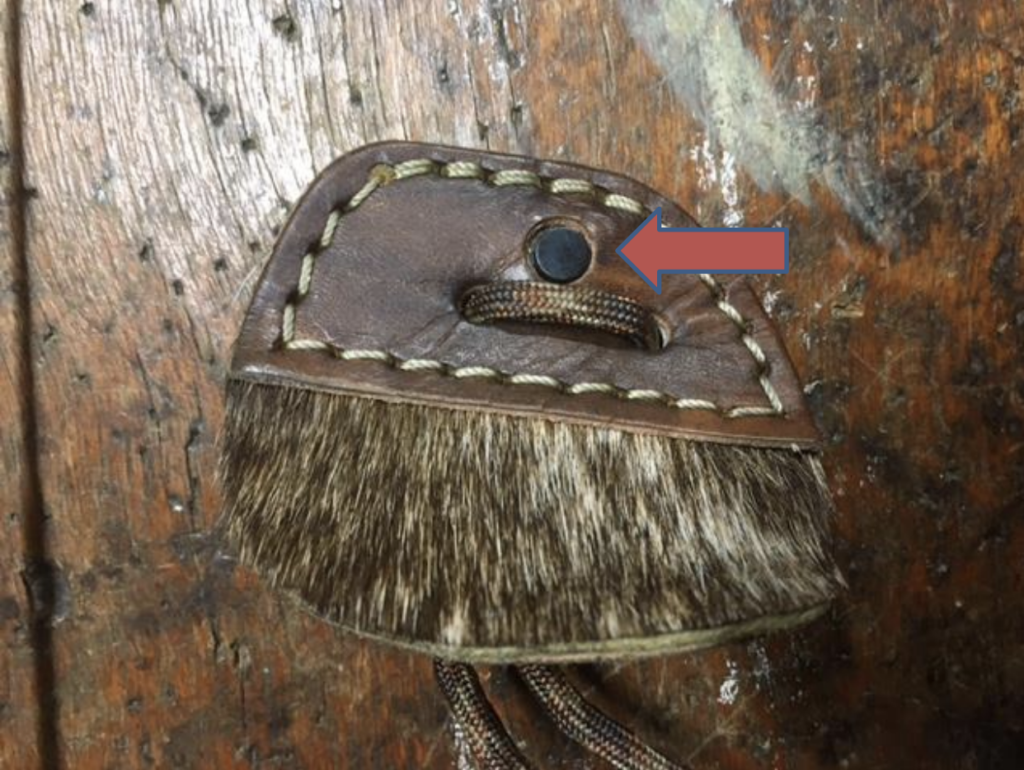
Consideration: lack of competence invites anxiety
Kaminski is a highly accomplished elite-level athlete, who knows himself and his process inside out, but even for him, making the sear work will be a matter of careful synchrony.
Ask yourself: how well do you know your process? If the answer is that you have knowledge gaps, or you are not very familiar with your fundamental steps, then the sear will only complicate the process.
Are recurve clickers given out to beginners? No, they are introduced at a specific stage of development for a reason. The process must be learned and automated.
The reason why barebow sears deserve even more attention is because, unlike in other divisions, there are a lot of self-taught archers, who will likely be left at a disadvantage, unable to not only analyse their process, but confused by the conflicting information, and unable to effectively implement any of the techniques.
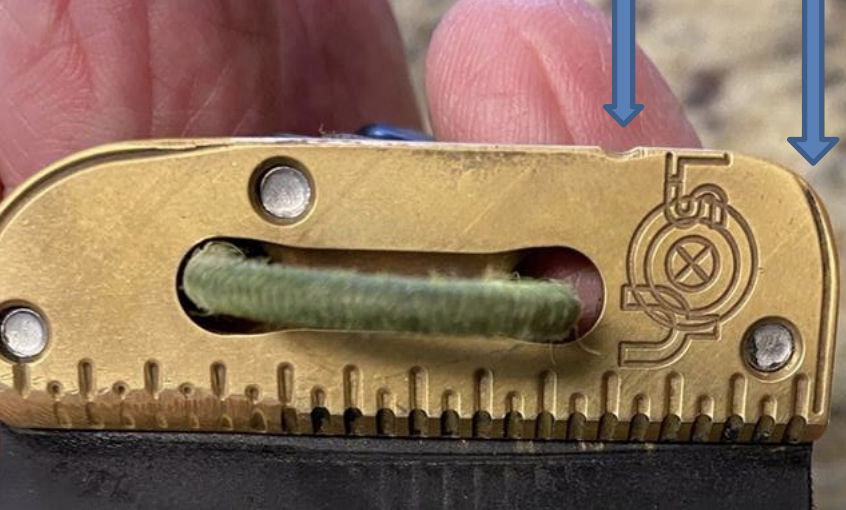
Confusion breeds more confusion, killing the joy of the sport. Go back to basics: address the gaps in your knowledge, and practise, so that you are able to effectively analyse your performance, eliminating any extra stresses during shooting. A sear will only consistently work with competent shooters.
As I said, many of the experienced barebow archers I know could not make the sear work for them. However, interestingly, many archers also reported having less anxiety in their shot. That should not come as a surprise, since the sears essentially act as grounding techniques.
As a result of this deliberate shift of focus and concentration on the sear itself, the archer’s working memory busies itself with that specific element, thus eliminating other intrusive thoughts and worries.
Intrusive thoughts and worries return as soon as the archer is once again unable to concentrate, or deliberates on the sear, (shot anticipation), and/or other elements. Psychological stress is accompanied by physical symptoms, muscular tension being just one of many.
For some, sears really can work wonders in the beginning, but achieving consistency and focus is the real issue.
Performance anxiety, or a more debilitating form of target panic, are complex multi-layered psychological issues, for which there is no magic pill. The individual must decide whether a sear is the right choice for them, but always be aware the outcome can be detrimental as well as beneficial.
Useful videos to watch on YouTube
- Jake Kaminski: ‘What is a grip sear & how I use it to manage target panic with barebow archery’
- ‘Barebow Archery Journey: A new archer learns form & I find a fix for my target panic’
- ‘How to make grip sears’ (note: not permissible under World Archery rules, but fun to play with)
- Push Archery: Shot IQ – grip sears, tab sears, clickers


